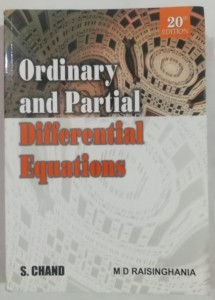Vector Analysis Raisinghania Pdf 164 Scokir
- onborsayzwinesef
- May 13, 2022
- 3 min read

The book will introduce you to the fundamental concepts and techniques of tensor analysis for further study. An introduction to tensor analysis is essential in the study of quantum field theory and general relativity and also in engineering, geophysics, .
coveage of all course fundamentals for vector analysis the The book is a must for each of you who are going to pursue a career in any of the above mentioned fields. Tensor Analysis Course Study Guide COVAGE OF ALL COURSE FUNDAMENTALS FOR VECTOR ANALYSIS by Dl3.COVAGE OF ALL COURSE FUNDAMENTALS FOR VECTOR ANALYSIS by Dl3.COVAGE OF ALL COURSE FUNDAMENTALS FOR VECTOR ANALYSIS by Dl3.COVAGE OF ALL COURSE FUNDAMENTALS FOR VECTOR ANALYSIS by Dl3.COVAGE OF ALL COURSE FUNDAMENTALS FOR VECTOR ANALYSIS by Dl3.COVAGE OF ALL COURSE FUNDAMENTALS FOR VECTOR ANALYSIS by Dl3.COVAGE OF ALL COURSE FUNDAMENTALS FOR VECTOR ANALYSIS by Dl3.COVAGE OF ALL COURSE FUNDAMENTALS FOR VECTOR ANALYSIS by Dl3.COVAGE OF ALL COURSE FUNDAMENTALS FOR VECTOR ANALYSIS by Dl3.COVAGE OF ALL COURSE FUNDAMENTALS FOR VECTOR ANALYSIS by Dl3.COVAGE OF ALL COURSE FUNDAMENTALS FOR VECTOR ANALYSIS by Dl3.COVAGE OF ALL COURSE FUNDAMENTALS FOR VECTOR ANALYSIS by Dl3.COVAGE OF ALL COURSE FUNDAMENTALS FOR VECTOR ANALYSIS by Dl3.COVAGE OF ALL COURSE FUNDAMENTALS FOR VECTOR ANALYSIS by Dl3.COVAGE OF ALL COURSE FUNDAMENTALS FOR VECTOR ANALYSIS by Dl3.COVAGE OF ALL COURSE FUNDAMENTALS FOR VECTOR ANALYSIS by Dl3.COVAGE OF ALL COURSE FUNDAMENTALS FOR VECTOR ANALYSIS by D 01e38acffe
exercises for chapter 3 vector analysis
Chapter 3 Vectors
Vector Analysis with Applications
As stated in Chapter 2, we may regard a vector as a number whose components are the coordinates of a point.
These components are also called the coordinates of the vector.
For example, vector a in Fig. 3.1 represents the vector whose components are (a1, a2).
The sign of vector a indicates the direction of the vector.
Direction of a vector.
See Fig. 3.1.
If a is positive, then the direction of the vector is in the direction of a.
If a is negative, then the direction of the vector is in the opposite direction of a.
If a is zero, then the direction of the vector is in a direction perpendicular to a.
Direction of a vector.
Note that the notation used in this chapter is different from the notation used in Chapter 2.
The length of a vector is defined as the magnitude of a.
Length of a vector.
The components of a vector are added to find the magnitude of a vector.
magnitude of a.
To find the components of a vector, multiply the components of the vector together.
magnitude of a vector.
Multiplying a vector by another vector yields a vector whose components are the product of the components of the two vectors.
Point M of Fig. 3.2
Direction of vector v.
Vector v in Fig. 3.2 represents the vector whose components are
1664
(5,6).
It is the vector whose direction is from the origin to the point M, the coordinates of which are (5, 6).
Vector v is a vector whose direction is in the direction of the normal to the plane C that has the equation 5x − 4y + 6z = 10.
Vector v in Fig. 3.2 represents the vector whose components are
(3,6).
It is the vector whose direction is from the origin to the point M, the coordinates of which are (3, 6).
Vector v is a vector whose direction is in the direction of the plane C that has the equation
The vector a, whose direction is in the direction of the line 4x + 5y + 6z = 10 is perpendicular to the line
Related links:

Comments